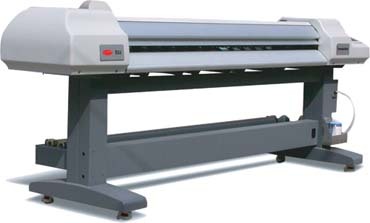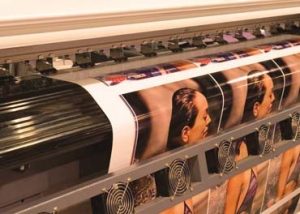Signmakers are blessed with many choices for large-format digital printing. The stars seem to have aligned properly, and today it’s easy to find nearly any digital-printing solution imaginable. A fast-growing market segment addresses very wide output, i.e. grand-format printers. Every rule has a few exceptions, and you could argue that any printer that exceeds 72 in. defines grand format.
We bring up this definition in deference to a new solvent printer that can handle media up to 2.2 meters, or 87 in., wide. In our mind, and the manufacturer’s, this is a grand-format printer, which also incorporates numerous other features that fall into the industrial mode characteristic of grand-format printers.
Your first question may be: "Who is |2404|, and why would I buy a printer from them?" Redhill was founded by various people, including Alan Barrett. A pioneer in the industry, he helped launch the first superwide printer.
The vision of Redhill’s founders was to import, market and support — not manufacture — the best large-format printers they could find. Their search led to China and a factory that follows the coveted ISO9001 standards for quality. Having found such a supplier, they offer some innovative products at a very attractive price.
For this article, we’re going to concentrate on the D23000S, otherwise known as the Thunderbird.
The Redhill product family
Advertisement
Though Redhill is fairly new, it offers a fairly well-rounded product line for grand-format printing. All of its printers use solvent ink, and they primarily differ by speed, resolution, print quality and width. Prices range from $45,000 to $180,000. The products come with a one-year warranty and worldwide service.
The Thunderbird can be considered at the bottom of the food chain for Redhill, but it also offers solid speed and the best quality. We’ll provide more on that later.
If you want to get into billboard printing, but the half-million-dollar startup price scares you, Redhill may have an answer. The D3500VE can print widths up to 10 ft. 8 in. (3.3 meters) at a maximum speed of 368 sq. ft./hr. It’s a four-color, 360-dpi printer, so don’t expect gallery-quality prints. However, the $49,000 price can get you into the business quickly in a market where distant viewing is your friend.
If you need more speed, you can jump up to the S8N. At $110,000, it costs more than twice as much as the D3500VE. The printing width, color set and resolution are virtually the same. If you really need to crank out prints, then the extra loot is easily justified by this machine’s maximum speed of 922 sq. ft./hr.
If you need even more speed, look at the ISSJET 2780 or 3400. These printers scream at maximum speeds of 1,400 or 1,700 sq. ft./hr. respectively. These printers are fairly pricey, at $165,000 to $180,000. However, they’re considerably less expensive than other printers in their class.
The D23000S
Advertisement
Maybe you aren’t looking to jump into the billboard market, but you want to produce extra-wide output. If your customer base needs really large banners, stage backdrops or kiosk graphics, then the Thunderbird’s 87-in. width may be perfect. As a bonus, the printer can produce high-quality images appropriate for up-close viewing, so you can also produce more traditional digital images, such as posters and POP displays.
Environmentals
The substantially built Thunderbird requires ample shop space. At 11.3 x 2.7 x 4.3 ft., it weighs a hefty 1,058 pounds. It’s obviously designed for production, not occasional use.
You’ll also need more than office power



 Photo Gallery1 week ago
Photo Gallery1 week ago
 Ask Signs of the Times1 week ago
Ask Signs of the Times1 week ago
 Paula Fargo6 days ago
Paula Fargo6 days ago
 Real Deal3 days ago
Real Deal3 days ago
 Benchmarks2 weeks ago
Benchmarks2 weeks ago
 Photo Gallery6 days ago
Photo Gallery6 days ago
 Women in Signs1 week ago
Women in Signs1 week ago
 Women in Signs1 week ago
Women in Signs1 week ago















